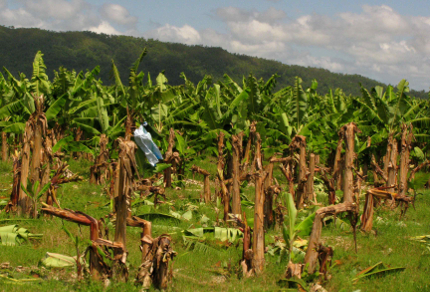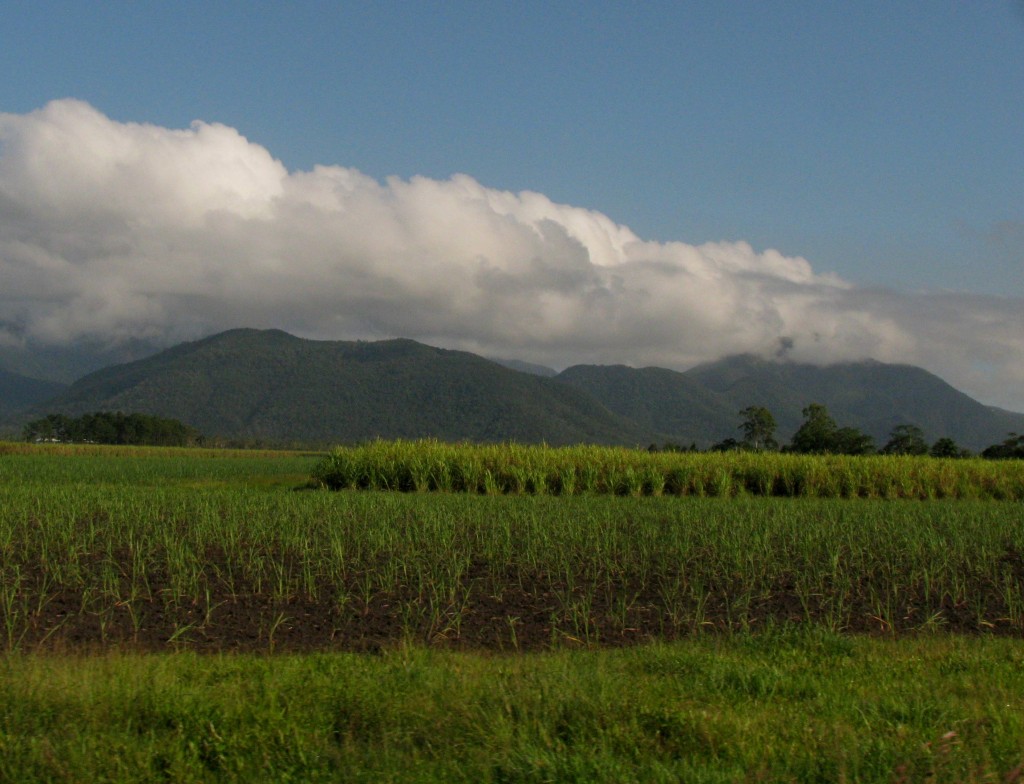
Sugarcane Paddocks near Ingham, Queensland (© Magi Nams)
At 6:15 a.m., beneath a blue sky touched with cloud clinging to the peaks of North Queensland coastal ranges, Vilis and I headed north from Townsville on the Bruce Highway, our destination Daintree Village 412 kilometres away at the edge of Daintree National Park. Beyond Paluma and the climatic border separating dry tropics from wet tropics, the savannah surrounding Townsville – its grassland spiked with kinky-trunked gum trees – gave way to sugarcane fields lush with new growth backed by forested peaks of the Paluma Range. On those peaks, a clear demarcation was visible between paler savannah cloaking the bases of the slopes and dense, darkly green rainforest enveloping the upper slopes.
The sugarcane fields occupying the coastal plain spread both westward to the mountains and eastward to the ocean, those paddocks stretching to the coast interspersed with tousled tree tops indicating hedgerows, thickets, and dense riparian vegetation bordering creeks and rivers. As we travelled northward, we observed paddocks representing all stages of sugarcane production – fallow, recently planted, lush young cane, and mature cane not yet harvested. We observed harvesters emptying freshly chopped cane into cane train bins for transportation to the region’s sugar mills in Ingham, South Johnstone, Tully, Babinda and elsewhere. A cane train pulling loaded bins crossed the highway in front of us near Innisfail, where banana plantations, as well as sugarcane, abounded.

Cane Train crossing the Bruce Highway near Innisfail (© Vilis Nams) Note Bannana Plants on right.
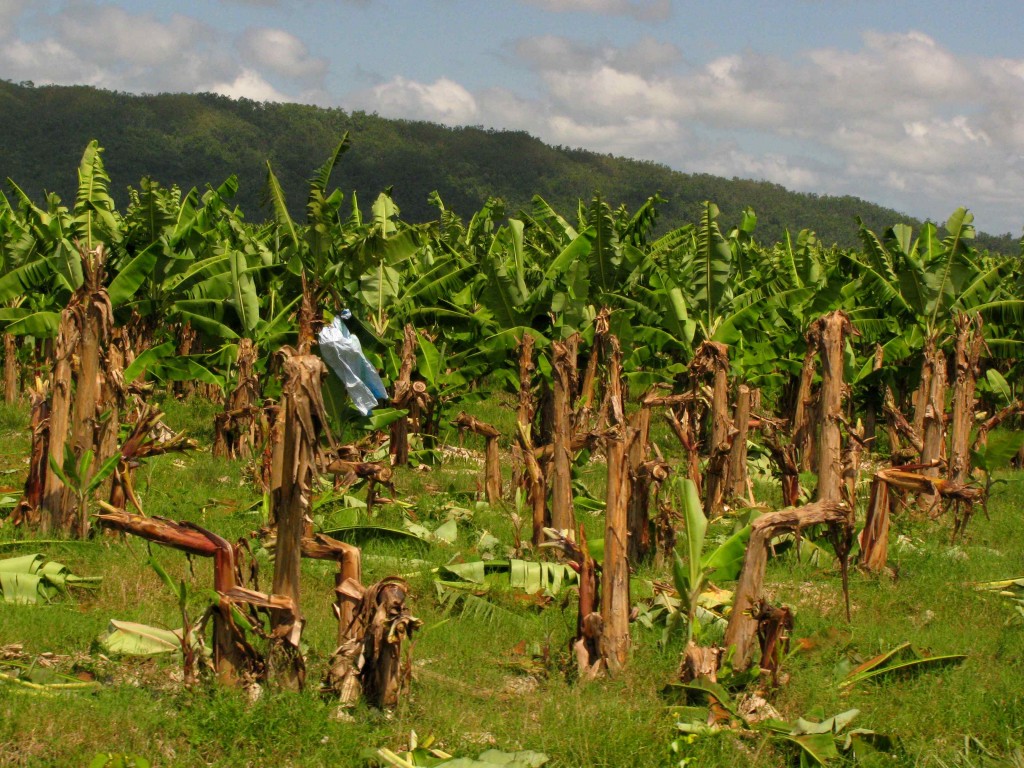
Banana Plantation near Innisfail, Queensland (© Vilis Nams)
Beyond Innisfail, we drove into new territory having incredibly lush, verdant vegetation that reminded me of the rich pastures and rainforests of the Atherton Tablelands. Patches and strips of lowland rainforest were draped so thickly with leafy vines that the trees bowed beneath their weight; these were interspersed with pastures and cane and banana plantations.
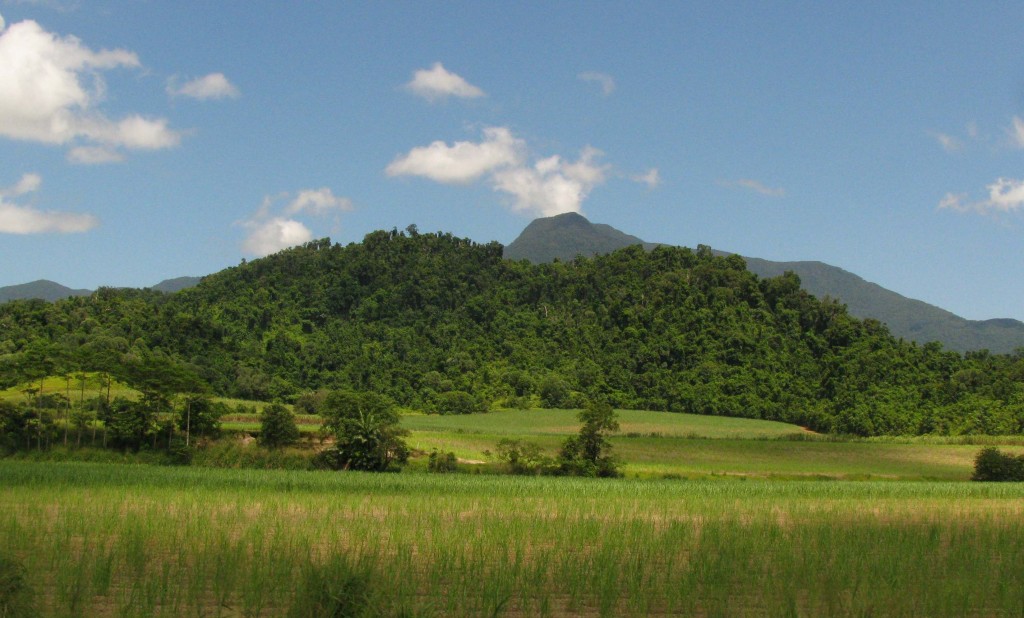
North Queensland Collage of Rainforest and Sugarcane (© Magi Nams)
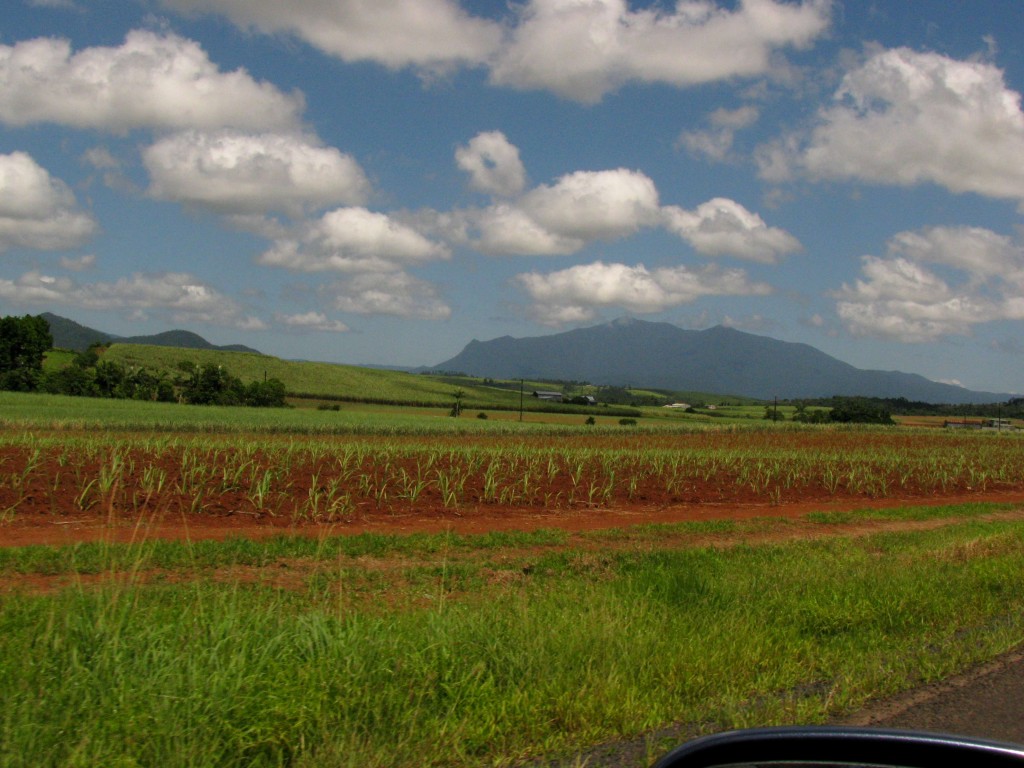
Sugarcane Country near Innisfail (© Magi Nams)
As we neared Cairns, steep ranges with serrated peaks paralleling the road pushed cane plantations closer to the coast. Beyond the city, which boasts North Queensland’s international airport and a bounty of tourist attractions, we sidetracked briefly off the Captain Cook Highway to Kuranda, a rainforest village high in the hills, which we discovered is far more commercialized than peaceful Paluma, our favourite rainforest haunt.
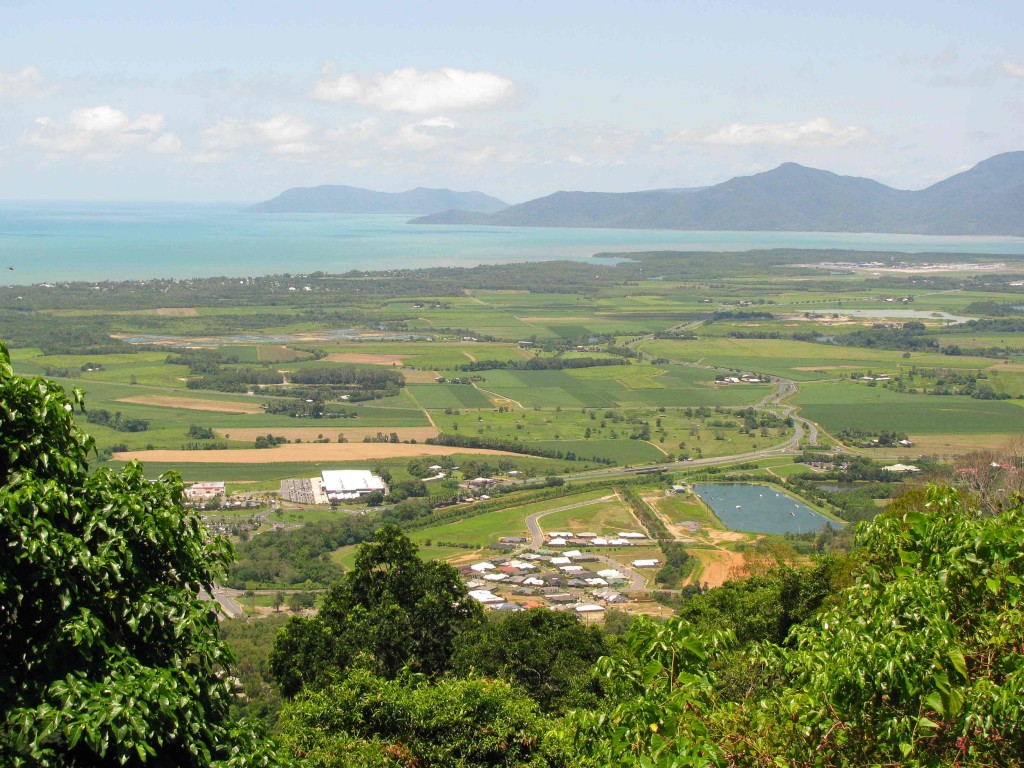
View of Coastal Plain near Cairns, taken from Henry Ross Lookout en route to Kuranda (© Vilis Nams)

Basket Ferns on a Street Tree in Kuranda (© Vilis Nams)
After returning to the Captain Cook Highway, we headed north again, the coastal road hugging steep, forested mountain slopes that plunged to the ocean. The narrow highway twisted, climbed, and fell, hinting that it may become a driver’s nightmare during the Wet. Beyond Port Douglas, the road levelled out, again passing through cane and pasture country.
In late afternoon, I drove us into Daintree Village, a quaint, sleepy village perched above the flood reach of the Daintree River. Cattle grazed peacefully in the company of cattle egrets, both meandering through densely-grassed pastures set against a backdrop of startlingly green hills.
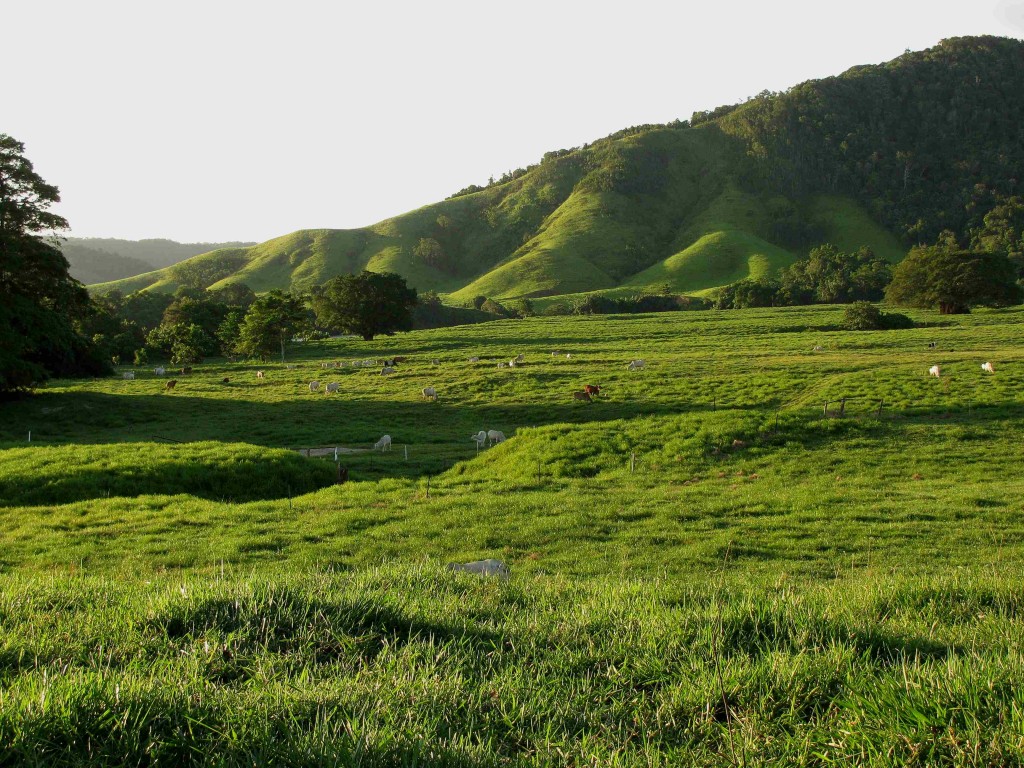
Pasture beside Daintree Village (© Vilis Nams)
After erecting our tent in the quiet campground of Daintree River Lodge, Vilis and I stretched our legs with a stroll through the village. We encountered birds everywhere – slim, black metallic starlings with brilliant red eyes, figbirds chattering in the treetops, the males possessing intensely yellow bellies, bush stone-curlews already wailing into the impending dusk, and flock after flock of pied imperial-pigeons in flight, their graceful white bodies highlighted by black wing tips and tails clearly seen against the rich backdrop of forested hills. And there was the river, a muscular, brownish-green waterway overhung by mangroves in places, and bordered by pasture in others. Tomorrow morning, with our eyes scanning for crocs and elusive tropical birds, we’ll ride its back.

Daintree River, Far North Queensland (© Vilis Nams)
Daintree Village birds: figbirds, pied imperial-pigeons, bar-shouldered doves, rainbow lorikeets, cattle egrets, welcome swallows, brown cuckoo-dove, white-breasted woodswallows, metallic starlings, yellow-bellied sunbirds, helmeted friarbird, brown-backed honeyeater, Australian white ibises, masked lapwings, spotted turtle-doves, mynas, white-headed pigeons, bush stone-curlews, varied triller, sulphur-crested cockatoo. Also a mystery voice I’ll ask our guide about tomorrow.

